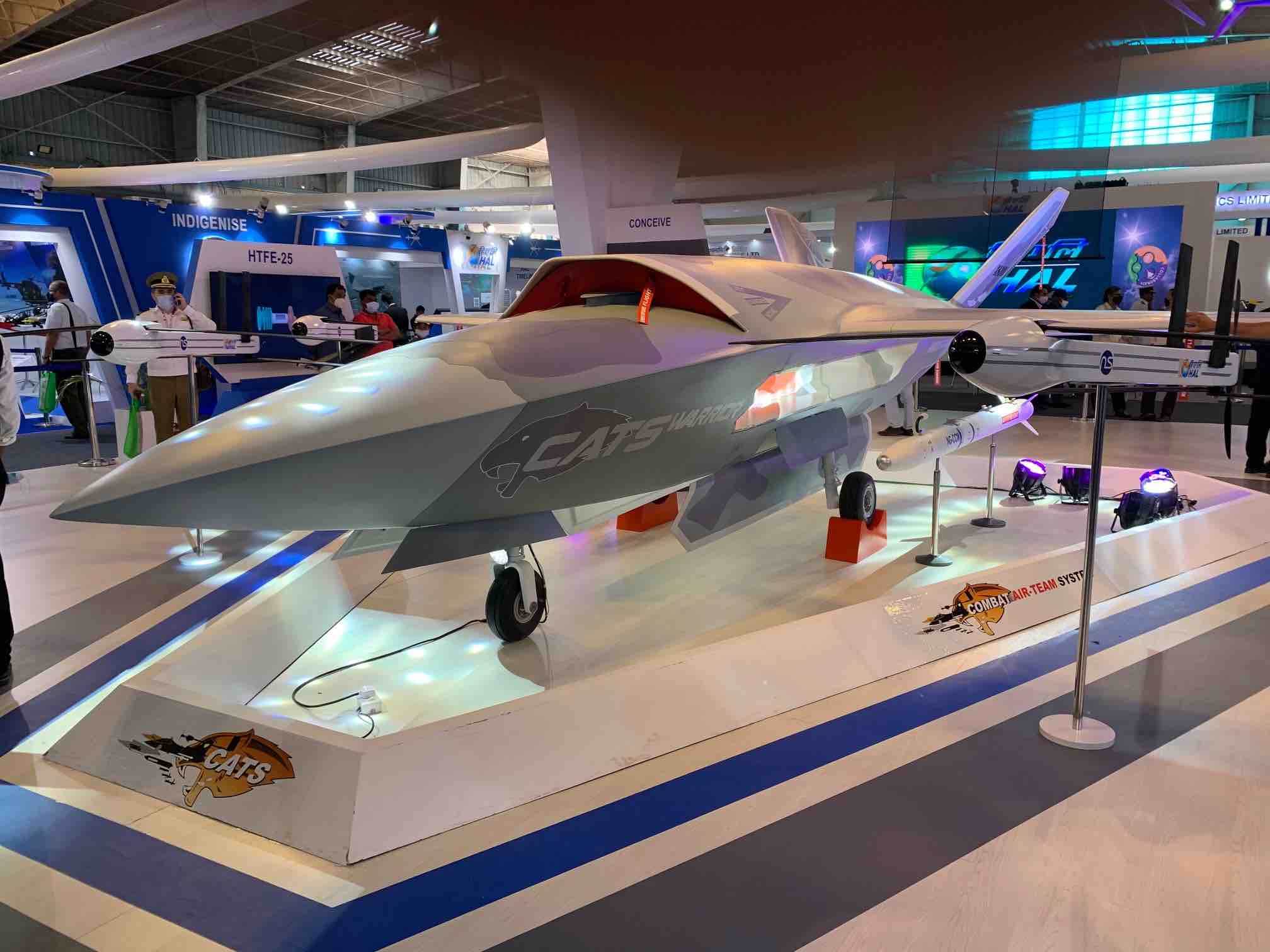In 2019, HAL and the IAF agreed to develop a "proof of concept", or an initial working prototype
By Ajai Shukla
Business Standard, 1st Jan 22
Air power theorists have for some years broadly agreed that the days of manned aircraft are over, since too much planning, equipment and survival systems are needed to protect human crewmembers. Around the turn of the century, it was believed that the current, fifth generation of manned fighters – America’s F-35 joint strike fighter; the Russian Sukhoi-57; the Chinese J-31 Shenyang and F-20 Chengdu and India’s Advanced Medium Combat Aircraft (AMCA) – would be followed by unmanned drones that would be remotely directed to their targets, where their weapon-loads would be autonomously released.
Indian air power planners, however, have not entirely embraced this belief in autonomous warfare. In the Aero India 2021 air show last February one of the most eye-catching and thought-provoking displays was a glitzy, laser-lit, full-scale mockup in the Hindustan Aeronautics Ltd (HAL) stall that highlighted how the Indian Air Force (IAF) would fight the wars of the future.
This was dubbed the Combat Air Teaming System (CATS), a combination of manned and unmanned systems that will operate in tandem in wartime, reinforcing each other’s strengths and capabilities.
Burned by the shooting down of a MiG-21 aircraft and the capture of its pilot after a dogfight over the India-Pakistan border in February 2019, CATS eliminates the need to send pilots into enemy air space. This eliminates the risk of their being shot down, captured and held hostage – events that can catapult a purely military operation into the political realm.
Instead, the CATS concept of operations involves manned aircraft functioning as airborne controllers of lethal, unmanned kill vehicles that swarm in numbers into enemy air space and overwhelm hostile defences.
The concept was presented by HAL to the IAF at the end of 2019. Top air force planners were interested enough to request an oversight role in the project. The first step agreed upon is the development of a “proof of concept”, or an initial working prototype.
While the IAF is likely to offer funding at a later stage, HAL is currently funding the project with its internal resources.
In an exclusive visit to HAL’s headquarters in Bengaluru, Business Standard was briefed on the CATS project.
The heart of the system is a manned “mothership” called the CATS-MAX. This is based on a manned two-seat fighter, such as the Tejas LCA (light combat aircraft) or the Sukhoi-30MKI, which flies as high as 45,000 feet, remaining inside our own airspace for safety. From the CATS-MAX, a single pilot, or a duo, controls operations through a data network with all the other elements of the system. The CATS-MAX will be a flying controller of all the other members of the system.
The strike power of CATS comes from four or more unmanned combat aeronautical vehicles (UCAVs), about the size of a Maruti 800 car, called the CATS – Warriors. These 1.6-tonne aircraft have low observability and fly autonomously at about 36-40,000 feet. In IAF jargon, these are called “loyal wingmen” and are armed with a variety of weapons and sensors depending upon the mission.
The CATS – Warriors have a radius of operation of 300 km and endurance of two hours. Each CATS – Warrior is powered by two PTAE-W engines, which the DRDO developed indigenously for the Lakshya pilotless target vehicle (PTA).
The CATS-MAX would direct the CATS – Warriors, through secure data links, to strike ground targets up to 300 km inside enemy territory, retaining the range to fly back to base. Alternatively, the unmanned Warriors could also be sent on a suicide mission, 900-1000 km inside enemy territory, sacrificing themselves to gain added range.
“The cost of each Warrier is about Rs 40 crore, which could be written off depending upon the importance of the mission,” said HAL’s chairman, R Madhavan.
The third component of the system is called the CATS – Hunter. These are basically terrain-hugging, turbojet-powered missiles, with ranges of about 300 km that are carried on the mothership’s wings. Once the mothership reaches its launch point, the Hunters are released and they fly out to distances of 200-300 km and execute their mission with 250-kg warheads.
The fourth component of CATS are called CATS-ALFA or Air Launched Flexible Assets. These are small swarm drones that the CATS – Warriors carry in multiple numbers in a canister called a “glide pod”. They are launched about 200 km from their target, and, after gliding for about 100 km, the glide pod launches the ALFAs, which assume a swarm formation for a swarming attack and then travel another 100 km to strike the designated surface target.
The ALFAs are low-cost assets, with very little ammunition. The mothership can remain in our territory and launch the ALFAs deep into enemy territory to do the damage.
HAL is developing the ALFAs in partnership with a small, start-up firm. “The start-up firm, NewSpace Research and Technologies (NRT), is doing the ALFA; we are doing the glide pod,” states the HAL chief.
The concept also visualises the CATS – INFINITY, a high altitude, pseudo-satellite that can be launched as a control vehicle and stay aloft for up to six months. It is powered by solar energy and has huge wings to accommodate the solar panels. This too is being developed in collaboration with NRT.
The core of all this networking activity is a digital data link partnership. “We are currently developing this in HAL’s Strategic Electronics Research and Design Centre (SLRDC) in HAL Hyderabad,” said Madhavan.








-1.png)













Second sentence, fifth line - I think you mean the Sukhoi -57 instead of Sukhoi - 35, right?
ReplyDelete# manohar parikkar's wry observation - marvel comics meets amar chitra katha
ReplyDelete